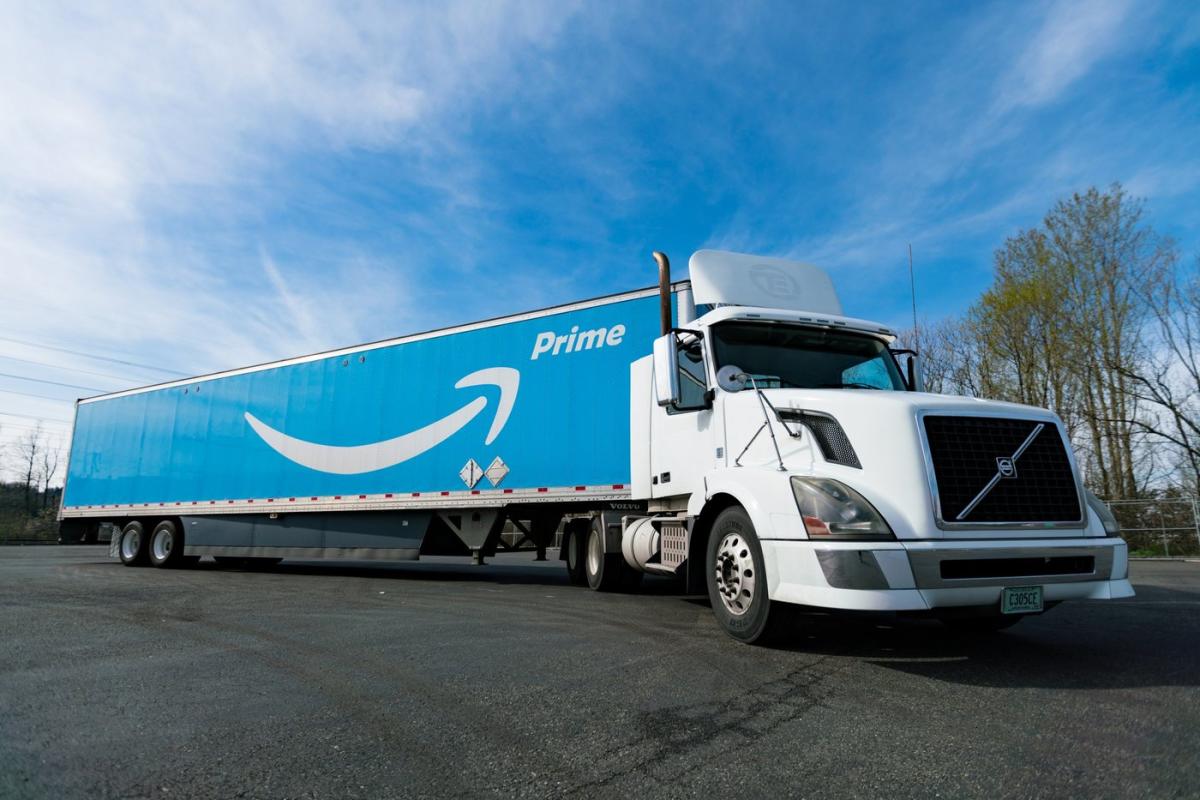In 2016, I started collecting shares of Amazon (NASDAQ: AMZN). I’ve only downsized my position once in the ensuing eight years, and I’m currently sitting on an almost 500% gain on my remaining shares.
Amazon is now my largest position and represents 6.5% of my portfolio. I’ve been tempted to cut that stake again, but I’ve decided not to sell any more shares for four simple reasons.

1. The flywheel is still turning
From 2016 to 2023, Amazon’s revenue grew at a compound annual growth rate (CAGR) of 23%, while split earnings per share (EPS) rose to a CAGR of 42%. That growth was driven by the expansion of online marketplaces and Amazon Web Services (AWS), the world’s largest cloud infrastructure platform.
Amazon subsidized the growth of its lower-margin online marketplaces thanks to AWS’s rising operating profits, and that strategy allowed it to expand its Prime ecosystem with loss-making strategies like discounts, free shipping and digital streaming services. AWS’s support, along with the gradual expansion of its higher-margin advertising business, gives Amazon a wide competitive position against its less diversified retail competitors. I believe the flywheel effect will continue to drive Amazon’s expansion.
2. Growth rates are stabilizing
Amazon experienced a major growth spurt during the pandemic as more people shopped online and more businesses signed up for its cloud-based services. But that tailwind disappeared as the pandemic passed. Inflation and rising interest rates then curbed consumer purchases and led many companies to rein in their cloud spending.
In 2022, Amazon’s revenues rose only 9% as it suffered a net loss from its devastating investments in Rivian car industry. But in 2023, sales grew 12% as the company returned to profitability. That acceleration was driven by the stabilization of the North American and international retail segments, which benefited from faster delivery speeds, higher advertising sales and their expansion into higher growth markets. AWS’s growth also accelerated again as more companies upgraded their cloud infrastructure to support heavier workloads, large language models, and new generative AI services.
For 2024, analysts expect revenue and profit to grow by 11% and 56% respectively as core businesses stabilize. Simply put, better days are ahead as the macro environment improves and the cloud business continues to grow.
3. Margins are increasing again
Amazon’s operating margin fell to 2.4% in 2022 from 5.3% in 2021 as its e-commerce and cloud businesses struggled with macroeconomic challenges. However, its operating margin rose to 6.4% in 2023 as it laid off tens of thousands of employees, tightly managed infrastructure costs and implemented other cost-cutting measures.
In its North American operations, Amazon generated more sales through higher-margin third-party sellers rather than through its own lower-margin marketplace, consolidated multiple deliveries into separate packages, and reduced its logistics costs by regionalizing its networks. International operating margins also stabilized the company and reduced costs, while its advertising business generated higher margin revenue from sponsored products and streaming video advertising.
Analysts expect Amazon’s operating margin to grow to 9.7% in 2024, then rise to double digits in 2025 and 2026 as Amazon continues to streamline its operations. That is a clear sign that there are economies of scale.
4. It has a lot of long-term growth potential
Amazon’s stock may not seem cheap with an expected profit margin of 40 times, but there is still plenty of room to grow. According to Mordor Intelligence, the global e-commerce market could still grow at a CAGR of 16% between 2024 and 2029, while Precedence Research expects the global cloud infrastructure market to grow at a CAGR of 12% between 2023 and 2032.
As the leader of both markets, Amazon could continue to generate double-digit revenue and profit growth in the coming years. It should continue to crush smaller e-commerce and cloud companies as it expands into adjacent markets.
Amazon is still a great long-term investment
Amazon is not immune to macroeconomic headwinds, it could be targeted by regulators and it faces numerous competitors. However, I believe it can overcome these challenges – as it has done repeatedly in the past – and rise even further in the coming years.
Should You Invest $1,000 in Amazon Now?
Before you buy stock in Amazon, consider this:
The Motley Fool stock advisor The analyst team has just identified what they think is the 10 best stocks for investors to buy now… and Amazon wasn’t one of them. The ten stocks that survived the cut could deliver monster returns in the coming years.
Think about when Nvidia created this list on April 15, 2005… if you had $1,000 invested at the time of our recommendation, you would have $677,040!*
Stock Advisor provides investors with an easy-to-follow blueprint for success, including portfolio building guidance, regular analyst updates and two new stock picks per month. The Stock Advisor is on duty more than quadrupled the return of the S&P 500 since 2002*.
View the 10 stocks »
*Stock Advisor returns May 28, 2024
John Mackey, former CEO of Whole Foods Market, an Amazon subsidiary, is a member of The Motley Fool’s board of directors. Leo Sun has positions in Amazon. The Motley Fool has positions in and recommends Amazon. The Motley Fool has a disclosure policy.
Why I’m Not Selling My Amazon Stock Even After a 500% Gain Originally published by The Motley Fool







